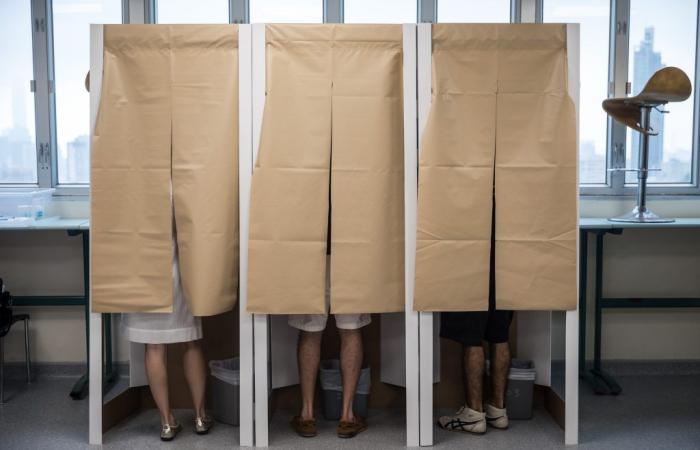At the end of the first round of the legislative elections, more than two candidates could remain in the running by qualifying for the second round which will take place on July 7. Triangular, or even quadrangular, could take place, directly linked to the participation rate.
Triangular and even quadrangular, two scenarios that we could well hear about on the evening of June 30, during the first round of the legislative elections. If the two-round single-member majority vote will take place in the 577 constituencies on June 30 and July 7, the legislative elections do not, however, require the qualification of a predefined number of candidates for the second round.
Thus, if the two candidates who came first at the end of the first round automatically obtain their ticket for the second, a third or even a fourth competitor can also access this second level of voting. To achieve this, he must have obtained a number of votes at least equal to 12.5% of the voters registered in his constituency at the end of the first round.
Thus, rather than a simple duel between two adversaries, it is not uncommon to see three or four qualify on the evening of the first round of voting: we then speak of triangular, or quadrangular. In these cases, in the second round, the Electoral Code provides that an absolute majority is not required to win the second round, but a relative majority.
Situations that depend on abstention
If triangulars occur regularly, quadrangulars are more complicated to obtain during legislative elections. Even more so when abstention is strong. Indeed, the 12.5% of votes that must necessarily be obtained in order to qualify for the second round must include all voters registered in the constituency, and not just those who voted. A threshold that can be difficult to reach.
For example, in 2022 the abstention rate in the first round stood at 52.49%. Knowing that 1% of voters had voted blank or invalid at the time, leaving only 46.5% of votes cast. To maintain his position, the candidate who came in third position in the first round then had to justify 26.9% of the votes cast. A threshold which has rarely been reached, only eight times during this election.
But the situation could change for the legislative elections of 2024. Indeed, given the large number of proxies carried out, more than six times more than in 2022 according to the Ministry of the Interior, the mobilization should be greater. And a reduction in abstention would in this way reduce the thresholds at which candidates can maintain themselves at the end of the first round, leading, de facto, to triangulars or even quadrangulars… And ever more uncertainty about the composition of the future National Assembly.
More precisely, if 60% of voters go to the polls on June 30, the threshold for qualifying for the second round drops to 20.8% of their votes. A figure which decreases further if 70% of registered voters move, to reach 17.9%. Or even 15.6% if the participation rate reaches 80%.
![«Une des conséquences directes ou indirectes de ces élections législatives, c'est le choix du Premier ministre de la France, pas du président de la République», a expliqué Gabriel Attal. [@CNEWS]](https://euro.dayfr.com/content/uploads/2024/06/25/8fd3c43c6d.jpg)
There is also a possibility in constituencies of not seeing any duel, neither triangular nor quadrangular. If in the first round, a candidate obtains more than 50% of the votes cast, and they represent 25% of registered voters, then he is automatically elected as a deputy.








